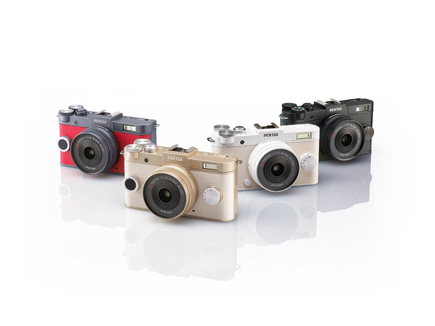Tom's Guide Verdict
The Pentax Q-S1 is a compact interchangeable-lens camera, but its features and performance fall flat compared with similarly priced competitors.
Pros
- +
Small but easy-to-use controls
- +
Q system features eight interchangeable lenses
- +
Cute vintage style
Cons
- -
Grainy low-light photos
- -
Low-res display with slow image playback
- -
Slow photo write speeds
- -
Just four filters
Why you can trust Tom's Guide
The $400 (body only, $500 with kit lens) Pentax Q-S1 is a replacement for the older Q7 that seeks to deliver an entry-level interchangeable-lens camera experience. Its 12.4-megapixel sensor is 2.5 times the size of those typically found in most smartphones, and the camera has the flexibility of eight Q-mount lenses. With a limited selection of filters, Pentax is also hoping to draw the interest of the Instagram crowd.
MORE: Best Smartphone Cameras
For this review I focused on the kinds of shots and situations that this camera will often encounter. This includes prioritizing my assessment of JPEG performance over evaluating RAW files; someone serious enough to shoot RAW is probably looking for a higher-end camera than the Q-S1. I also wanted to challenge the camera with tough low-light situations to simulate the types of photos you would get during a night out at a bar or restaurant.
Design - Retro Chic
When the white and gold Q-S1 arrived at the office, it was greeted by chorus of "oohs" and "awws"— from men and women alike — as if the retro-styled camera were a puppy or newborn baby. I'll admit I was momentarily entranced by its cute, compact design. With five color choices for the body and eight for the grip, there is surely a combination to suit your style.

Removing the lens reveals a tiny 1/1.7-inch sensor, which is 2.5 times larger than the 1/3-inch sensor in an iPhone 6. This makes the Q-S1 a decent step up from most smartphones, but it's still overmatched compared to some of its competitors.
The front is adorned with two wheel-like protrusions: the one on the right is a dial to select filter effects, and the one on the left is a knob used for better grip and to balance out the aesthetics. The back features 3-inch, low-res 720 x 640 non-touch LCD display, and a small control cluster for adjusting settings and navigating the menus.

At 4.13 x 2.28 x 1.33 inches and 7.16 ounces sans lens, the Q-S1 is a little larger than two packs of playing cards stacked together. However, it’s bigger than the interchangeable-lens Samsung NX Mini (4.35 x 2.44 x 0.89 and 5.44 ounces), despite the Mini's larger 1-inch sensor. Ports include mini HDMI and a PC/AV in, with a tripod mount on the bottom.
Get instant access to breaking news, the hottest reviews, great deals and helpful tips.
Image Quality - Night and Day Makes All the Difference
The Pentax Q-S1 features the same 1/1.7-inch 12.4 megapixel CMOS sensor found on its predecessor, the Q7. However, Pentax has added a few tweaks to the image processor that it says allows the Q-S1 to produce good prints all the way up to 19 x 13 inches. Nevertheless, the 20.5 MP Samsung NX Mini has a 2.6x larger 1-inch sensor (currently available for less than $400 with 9mm kit lens).

Specs include the ability to shoot up to 1/8000 of a second and a max ISO of 12,800. The ISO range is good for a camera in this price range, but short of what you get on most DSLRs. The Q-S1 also has a minimum aperture of f/8, which can make it difficult to control depth of field. This is more restrictive than many cameras that have a minimum aperture of f/20 or more for greater depth of field.
Bright Light - Proficient Daytime Shooter
Despite the small sensor, the Q-S1 performs well in bright conditions. Focus is fast, and I liked the overall color accuracy and auto-white balance performance. Differences between RAW and JPEGs in daytime shots were pretty minimal.
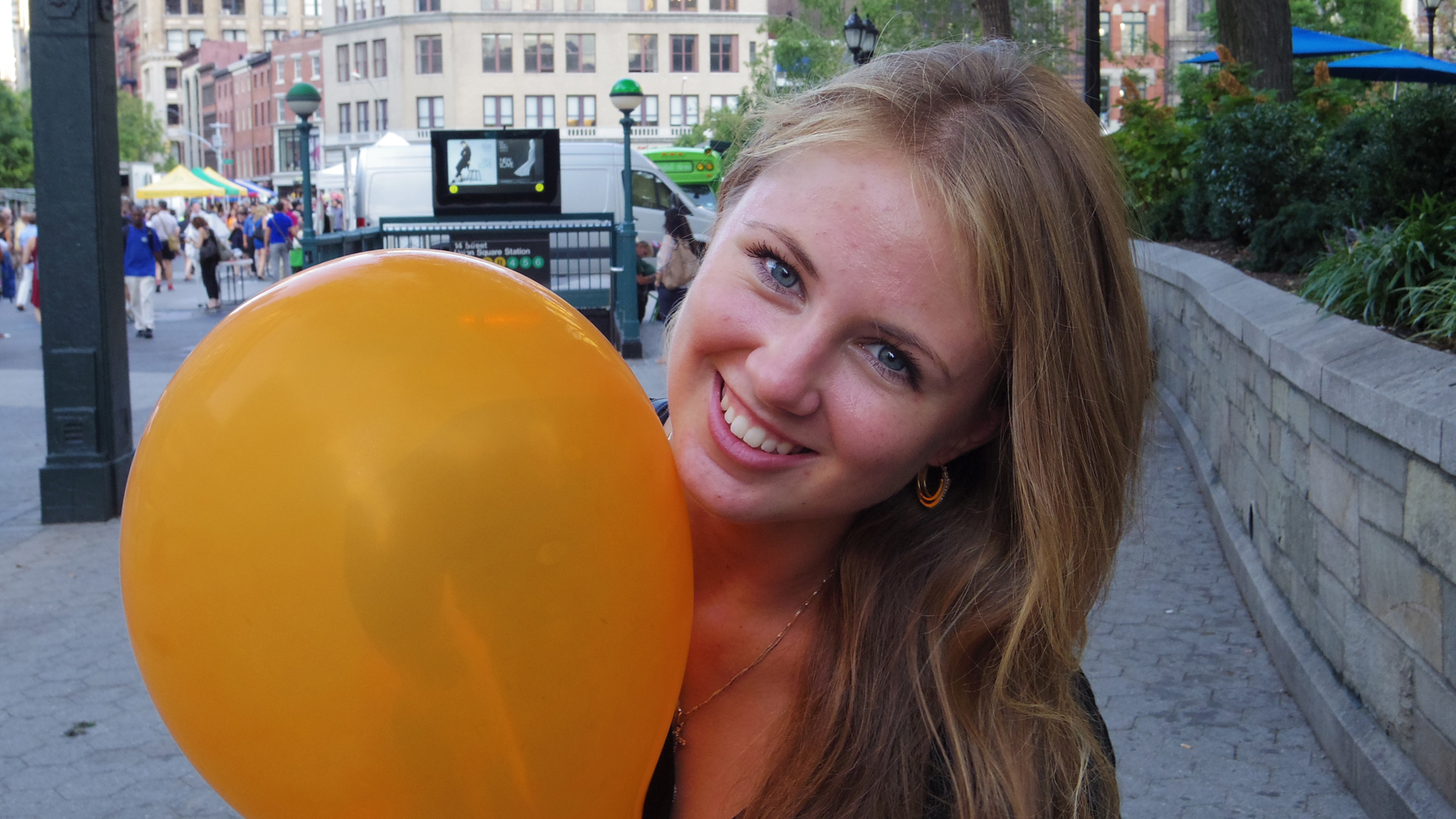
The Q-S1 did a great job with this portrait in Union Square. Even without face detection on, focus is solid, with good sharpness around the woman's eyes and face. The camera accurately captured the color of her blond hair as well as the goldenrod balloon. Even with a slightly backlit background, you can still see detail in the dark shrubbery on the right and the farmers' market umbrellas on the left.

This challenging shot of One World Trade Center shows the wide dynamic range of the Q-S1. Aside from the lens flare in the upper left, which can sometimes be unavoidable, there is great detail throughout. Take a look at the clothes of the pedestrians and the intricate architecture.
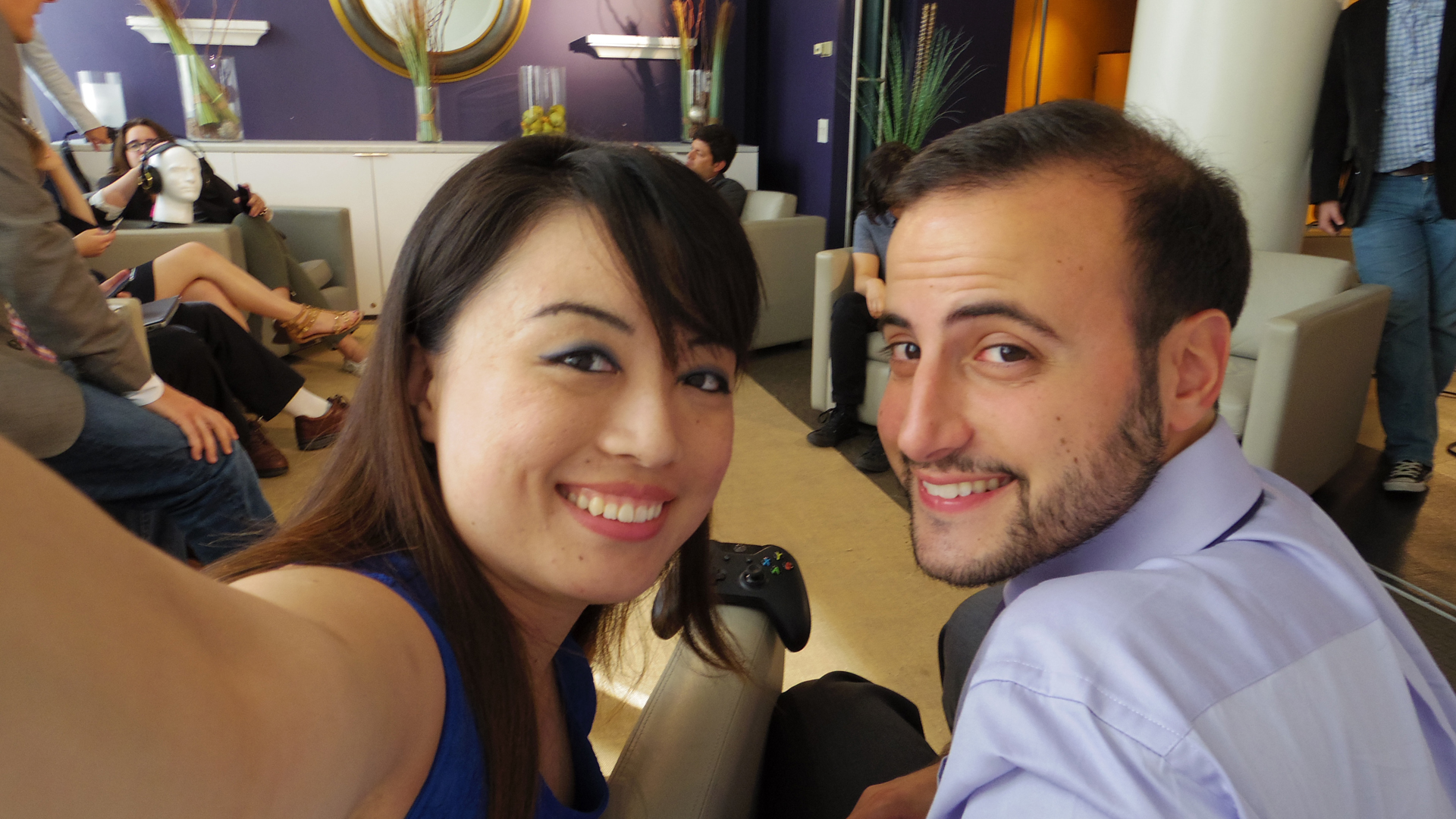
A compact camera like the Q-S1 will inevitably be tasked with a selfie (or 100) during its lifetime. This photo taken by a fellow Tom's Guide writer did a decent job capturing details, but it lacks sharpness around the eyes and face. Note that without a flip-up display, you are essentially shooting blind on every shot.
Low Light - Low Tolerance for High ISO
The Q-S1 has a max ISO of 12,800, which, in theory, provides a great range for low-light shots. Unfortunately, cranking the ISO that high produces grainy and color-speckled photos. In my experience, usable range extends to about ISO 3,200, which is good for well-lit indoor and early-evening photos.

In aperture priority mode, the Q-S1 is incredibly hesitant to move shutter speed below 1/60th of a second, instead opting to increase the ISO. While keeping the shutter speed high helps prevent blurry images from camera shake, it results in a lot of shots at ISO 5,000 and 6,400. These photos end up being more noisy than they could have been had the camera decreased shutter speed to 1/40 or 1/50th of a second.

At ISO 3,200, you can see grain throughout the photo, most noticeably on the man’s dark shirt. This causes a lack of sharpness, which is compounded by the poor autofocus, as the camera was confused between foreground and background. The Q-S1 has a separate face detection mode, but I shouldn't have to select it to get sharp focus.

Sunset in New York City is a beautiful thing, and the Q-S1 did a good job of capturing the myriad colors in the sky. Unfortunately, detail is a little soft at ISO 1,250.

My picture of a chef at a Japanese barbecue restaurant didn't impress. At 6,400, grain is easy to see and severely affects image quality. Potential buyers deserve better images, even for posting on Facebook or Instagram.
Filters - Just Four Options
The Q-S1 includes four filters that you can select from the dial on the front. Brilliant color is similar to Vivid mode on other cameras, and does a good job producing very saturated colors. Vintage color provides a more muted color experience, while Antique mode adds a Sepia effect across the entire image.

My favorite filter is Unicolor Bold, which created a compelling, highly stylized image. With just four filters, your options are limited, but they can create some stunning images that would normally require extra time and post-processing.
Video Quality - Worrisome Wobble
The Q-S1 supports video recording at 1080p, 720p and 480p at your choice of 30, 25 and 24 fps. This is pretty standard for a camera in this price range, but what isn't standard is the wobble that you get in almost every video. I did my best to hand-hold the camera as still as possible, but even then video was jellylike, and that was with image stabilization turned on.
Bright Light
This video of jazz musicians in Washington Square Park would be good if it weren't for the wobble. Audio was pretty standard for a camera without an external mic input, but it's hard to get past the incredibly shaky video.
Low Light
Nighttime videos were similarly wobbly, although the Q-S1 did a decent job of pulling in enough light to create a well-lit video.
Autofocus - Quick But Sometimes Confused
The Q-S1 has relatively quick focus for a camera of its size and price. It uses contrast detection, which is complemented by face detection and motion tracking. Unfortunately, you have to select each of these modes separately from the focus settings in the camera's menu, which takes your concentration away from getting the shot. Pentax has also included an LED autofocus assist light for faster focus in clubs or restaurants.
MORE: Our Favorite Bridge Cameras
Users can open up a 64-point focus grid by hitting the OK button, which gives you a 3 x 3 focus selection box. This allows you to specify an area focus, which is important because otherwise the Q-S1 can get confused. This confusion increases in low light, with focus targeting things in the background even when there was clear subject dead ahead.
Controls - Small But Extensive
Despite the Q-S1's small body, Pentax has managed to cram in dedicated buttons for most of the important functions.

These include a mode dial for changing from aperture to shutter priority. The four-key cluster around the OK button controls ISO, white balance, drive mode and flash.
| Setting | Presses to access | Function |
|---|---|---|
| Shutter | 0* | Length of exposure |
| Aperture | 0* | Amount of light let in |
| ISO | 1 | Light sensitivity |
| Focus mode | 5 | Point or points used for focus |
| Light metering | 5 | Part of image with optimized exposure |
| Custom White Balance | 3 | Tune overall color cast of image |
| Exposure Compensation | 1 | Set auto exposure to be darker or lighter |
| Wi-Fi sharing | NA | Send images to smartphone, activate remote viewfinder |
| Video recording | 0* | Switch from photo to video and back |
| Play | 1 | View images or videos you've shot |
| Delete image | 1 | Remove image from card |
| Photo capture quality and resolution | 5 | Amount of JPEG compression/detail, or RAW |
| Video capture quality | 7 | Resolution, frame rate and amount of compression/detail |
| Drive | 1 | Single photo, burst, timer, etc. |
Hitting the Info button gives you a 3 x 5 grid providing access to higher-level settings like metering and focus type, which can be changed by digging into the menu as well. More advanced shooters will be happy to know that the camera allows for full manual control as well.
Usability - Curious Quirks
While controls are relatively straightforward, there are a few issues that came up when using the Q-S1. I noticed extremely long write times, especially when the camera was set to capture RAW + JPEG files. I often found myself waiting up to 8 or 9 seconds to view a picture. When set to take just JPEGS, photos still took a few seconds to save.
When viewing photos on the 3-inch display, I first thought the screen was very low-res. I then discovered it takes a full second for all the details to appear. This delay makes the process of reviewing your photos slow and tedious.
MORE: How to Take Better Photos with a DSLR or Mirrorless Camera
Another issue is that when using the 5 fps high-speed sequential shooting mode, the image buffer fills up almost instantly. This means you have only one second of 5 fps shooting before the camera slows down to about 1.5 fps, and that’s even with the camera set to take JPEGs.
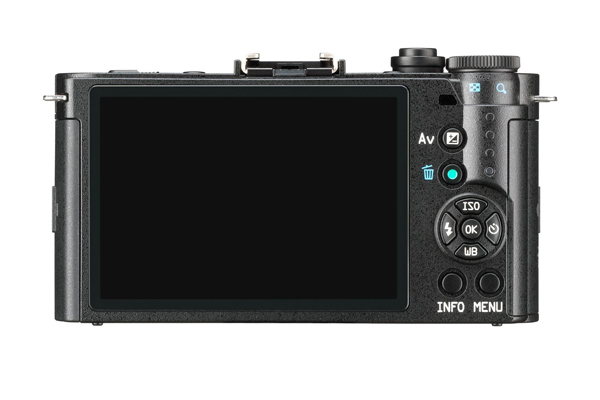
For a camera that is looking to entice Instagram and smartphone users, the inclusion of just four filters (Brilliant, Unicolor Bold, Vintage Color, and Antique) makes the whole idea seem incomplete. If a company is going to go so far as creating a dial solely for the purpose of filter selection, I would expect it to load the camera up with more options. While more expensive at $600 (body only), the Olympus Pen E-PL7 offers 14 filters and 7 art effects, not to mention a sensor that is more than four times larger than the one in the Q-S1, as well as a much larger lens selection.
MORE: The 10 Wildest Camera Concepts
On a more positive note, for everyday well-lit shots, the Q-S1 offers a good photo experience for someone looking to upgrade from a smartphone camera.
Battery Life
The Q-S1 boasts a CIPA-rated 260 shots per charge without flash. In my experience, the camera lasts an ample amount of time, taking more than 200 shots over the course of a week without the battery dying. It is only when shooting video or with lots of flash that I noticed the battery draining at a much quicker rate. But considering the minuscule size of the camera and its 1000 mAh power pack, battery life with the Q-S1 feels quite sufficient.
Lenses - An Octet of Choices
As the newest member of the Pentax Q family, the Q-S1 has access to eight Q-mount lenses. The $500 kit comes with the Pentax 02 5-15mm f/2.8-4.5, which is equivalent to 27.5-83mm on a full-frame camera. This is a good all-purpose lens, although its 2-inch length (twice the size of the 01 8.5mm) makes carrying the Q-S1 around more of a chore.
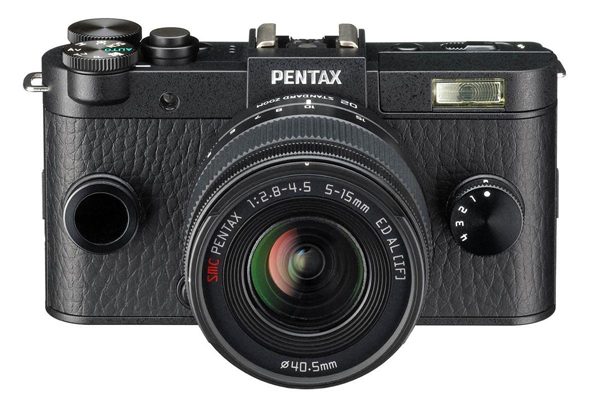
During my review, I also used the $200 Pentax 01 f/1.9 8.5mm prime lens. The wide f/1.8 aperture lets you use lower ISOs, which makes it much easier to reduce noise and grain, something the Q-S1 needs help with. I would highly recommend anyone who is dead set on picking up a Q-S1 to add this lens to their bag. In the end, I found myself preferring this lens over the Pentax 02 lens that comes with the kit due to its wider aperture and smaller size.
MORE: How Many Megapixels Do You Really Need?
Note that two of the eight Q-mount lenses are "Toy" lenses that simulate images as if they were taken through a toy camera. These have a more limited appeal due to the distorted and highly stylized images they produce.
Bottom Line
I wanted to like the Q-S1 with its cute retro styling and small but full-featured controls. Unfortunately, the Q-S1 is outclassed by the Samsung NX Mini in terms of specs, price and performance. For $100 less, you get a bigger sensor, smaller body and a touch screen. While Pentax provides more choices for lenses (eight for Pentax versus three for Samsung), if that’s a priority you're better off moving up to a so-called "micro 4/3" mirrorless camera from Olympus or Panasonic. The Q-S1 simply has more style than substance.
Specs
Model name: Pentax Q-S1
Megapixels: 12.4 MP
Type: Mirrorless
Price: $500 kit with f/2.8-4.5 5-15mm
Shots per sec: JPEG: 5 fps burst, 1.5 fps up to 100 shots
Sensor type: 1/1.7" Backlit CMOS
Kit lens offered: f/2.8-4.5 5-15mm
AF points and types: Contrast detect AF with detection and tracking
Shutter speed range: 1/2000, 1/8000 with Electronic Shutter enabled
ISO range: Auto ISO 100 to 12,800, bulb to ISO 1,600
Main video resolutions/frame rates: 1920 x 1080, 1280 x 720, 640 x 480 at 30, 25, 24 fps
Video file formats: MPEG-4 AVC/H.264 (.mov)
Built-in flash: Pop-out P-TTL flash
Hot shoe: Yes
Card type: SD, SDHC, SDXC and Eye-Fi
Ports: USB 2.0, AV OUT, mini HDMI out
Shots per charge (CIPA): 260 image w/o flash
Wireless capabilities: Eye-Fi Card compatible
Image stabilization: Sensor shift shake reduction
Dimensions and weight: 4.13 x 2.28 x 1.33 inches, and 7.16 ounces with battery
- Best Mirrorless Cameras
- Our Favorite Free Photo Management Tools
- Terms and Jargon: Tom’s Guide Digital Camera Glossary
Sam Rutherford is a Staff Writer at Tom’s Guide. Follow him @SamRutherford on Twitter and Google+. Follow us @Tom’s Guide on Facebook and Google+.
Sam is a Senior Writer at Engadget and previously worked at Gizmodo as a Senior Reporter. Before that, he worked at Tom's Guide and Laptop Mag as a Staff Writer and Senior Product Review Analyst, overseeing benchmarks and testing for countless product reviews. He was also an archery instructor and a penguin trainer too (really).
-
mosc "The Q-S1 also has a max aperture of f/8, which can make it difficult to control depth of field. This is more restrictive than many cameras that have a max aperture of f/20 or more for greater depth of field."Reply
1) Max aperture is usually the smaller number (ex, f2.8), not the larger number because the f system is about a ratio between aperture and focal length, not the aperture diameter itself. The smaller the f number, the larger the physical aperture
2) Each lens has it's own min aperture (which you call max) and it's not determined by the camera. It ranges from f5.6 to f9
2) The Q's sensor is so small that it's max aperture of f8 is already microscopic compared to any DSLR. In actuality, it's f8 is smaller physically than f32 on a 35mm film camera (or FF DSLR) and plenty tiny for maximizing depth of field in nearly all conditions. The physical aperture controls the depth of field, not the native format f-stop.
3) f8 is basically at the diffraction limit for this resolution. Suggesting the lenses need to support a smaller aperture is... wrong. -
abp as mosc wrote just before, the article contains a very concerning mistake in regard to photographic technique and basic camera/lens knowledge. It's a pity since the review seemed to be quite well structured.Reply
Sadly, the mentioned misconception completely undermines the competence of the reviewer and the validity of the article. In fact, also some poor results in the test could be challenged as consequent to a misuse of the camera. Two easy examples:
- the blurry eyes/face in the selfie: 1/40s is definitively too slow for holding the camera in such an awkward position (all photo is blurred, not only eyes), the lady was also probably moving her head;
- aperture priority and camera's "hesitation" to choose slow speed: just start setting first either the ISO value you want ot use or the maximum ISO number you consider acceptable and the problem would be solved.
At least this review clearly shows that this is not a P&S camera and no camera for smartphone users. :-) -
nopal10 I cant belive what i read... ¿Only 4 filters aviable? seriously ¿do you even bother to use this camera the right way? gtg of this pitifull site ._.Reply
